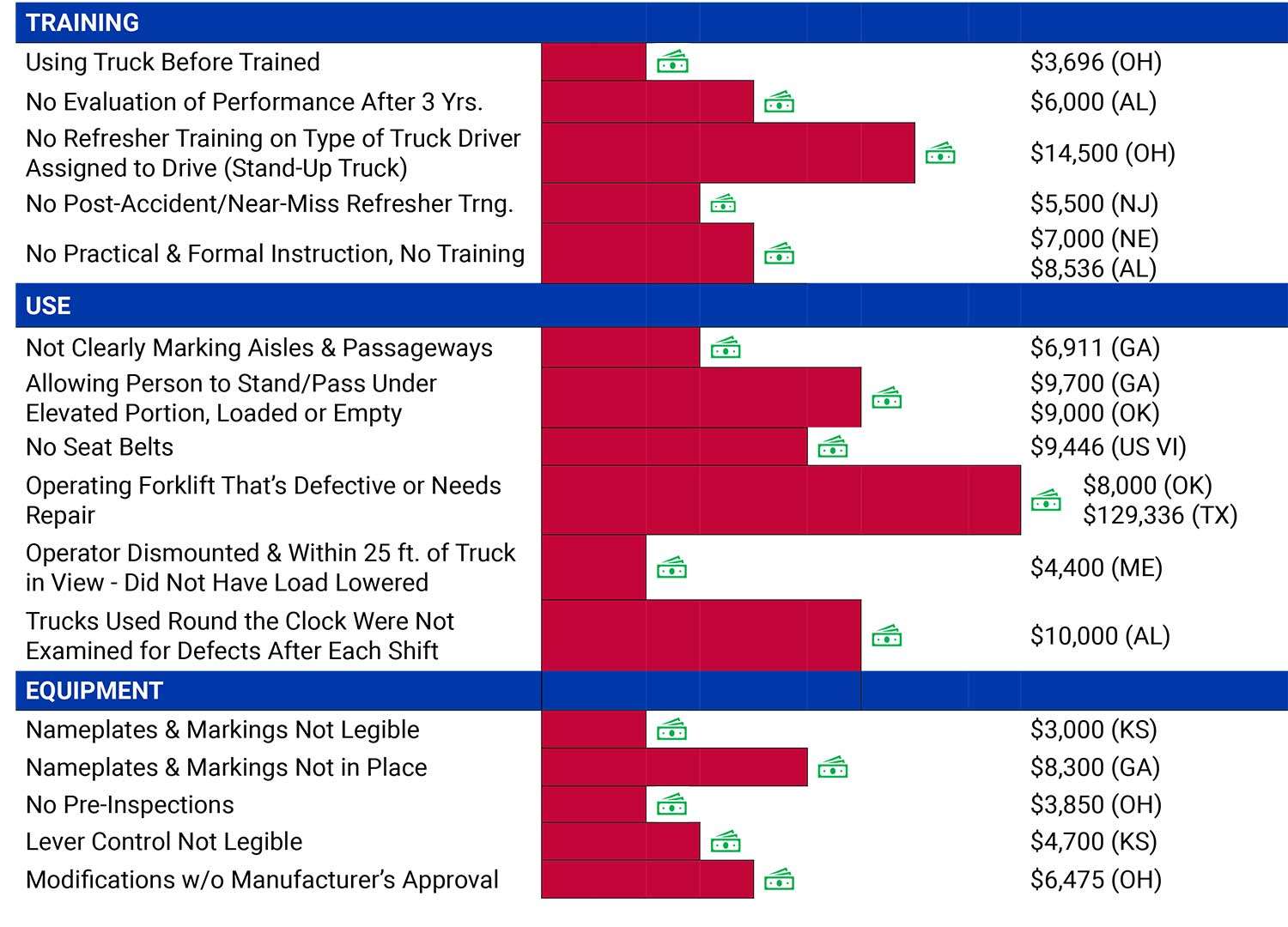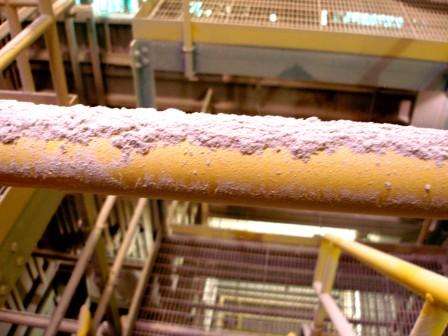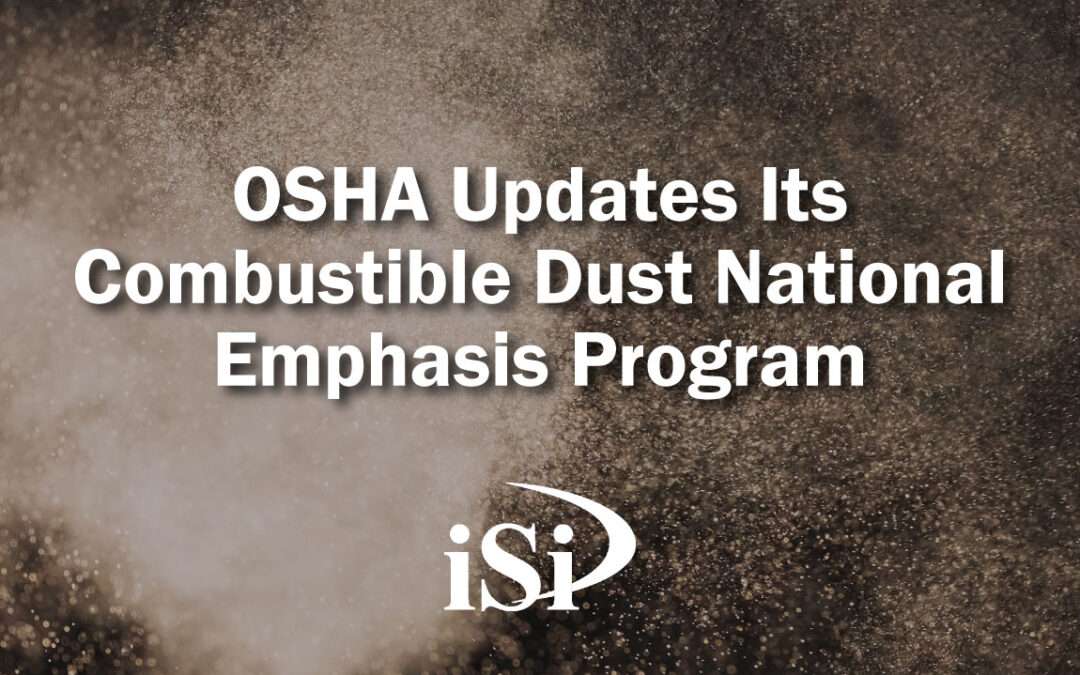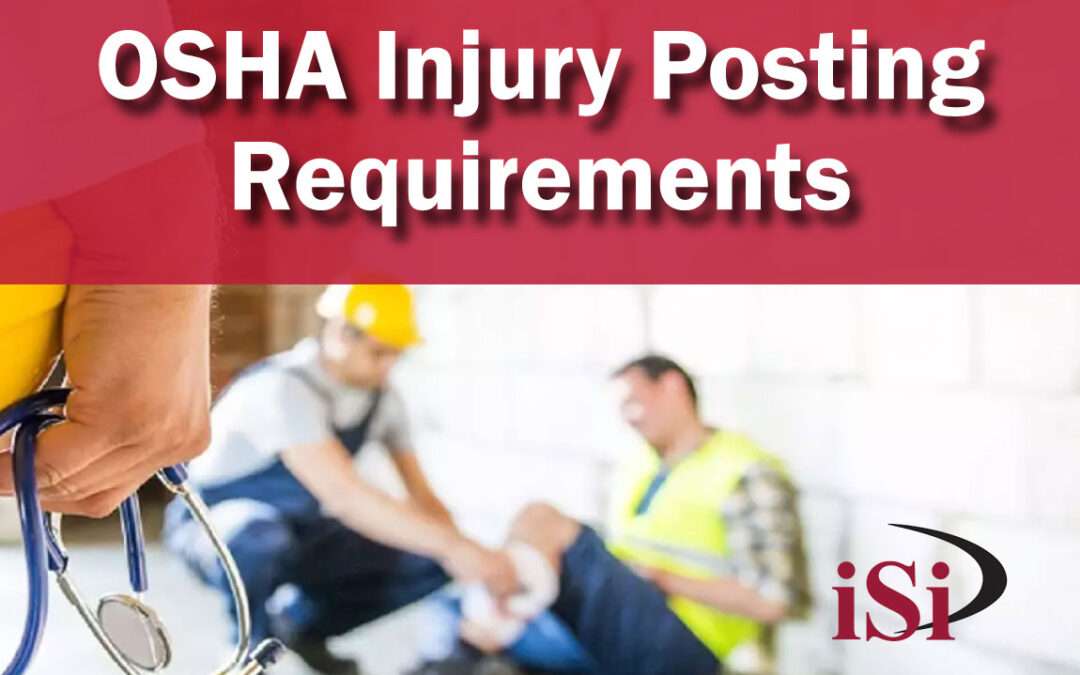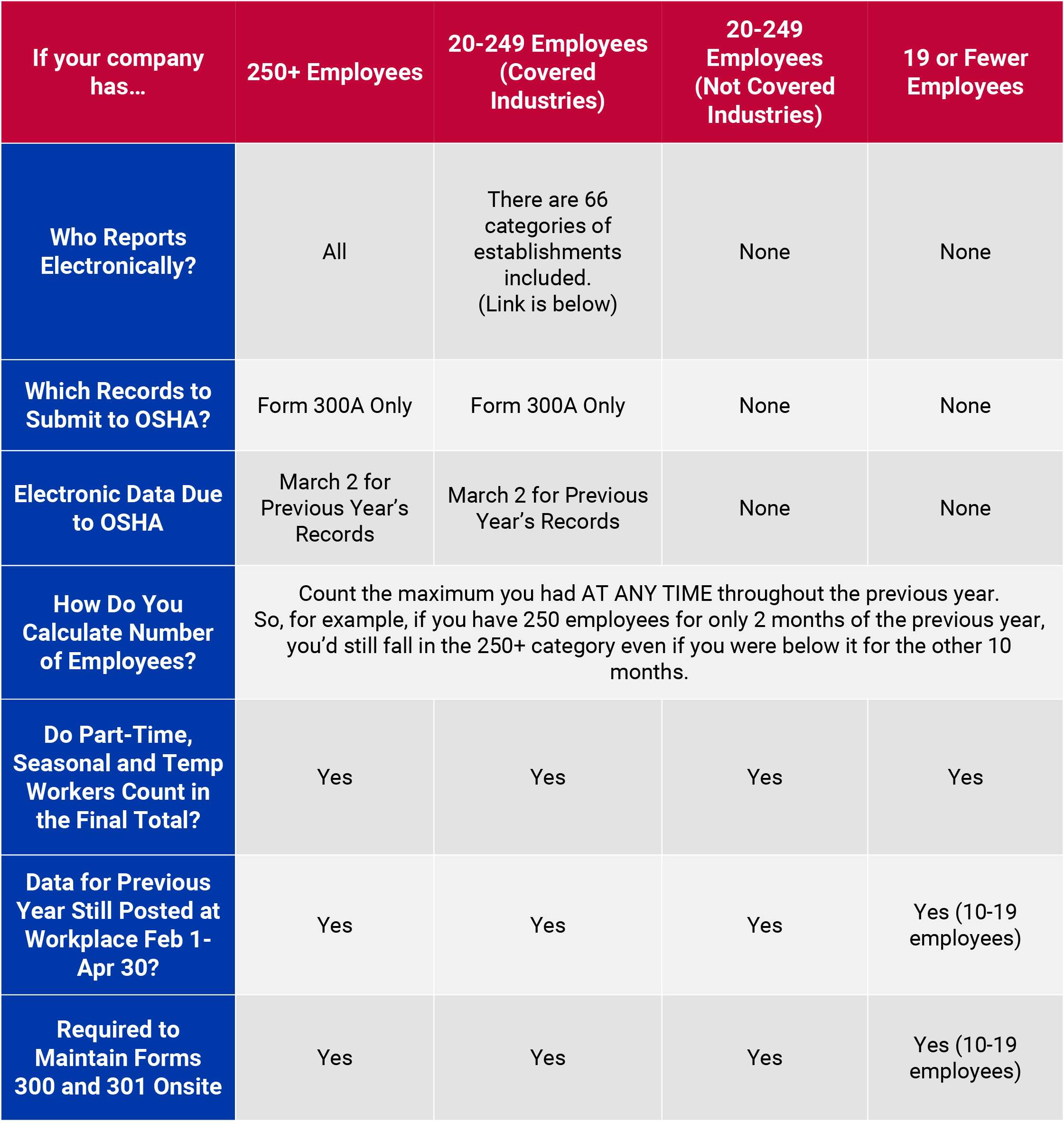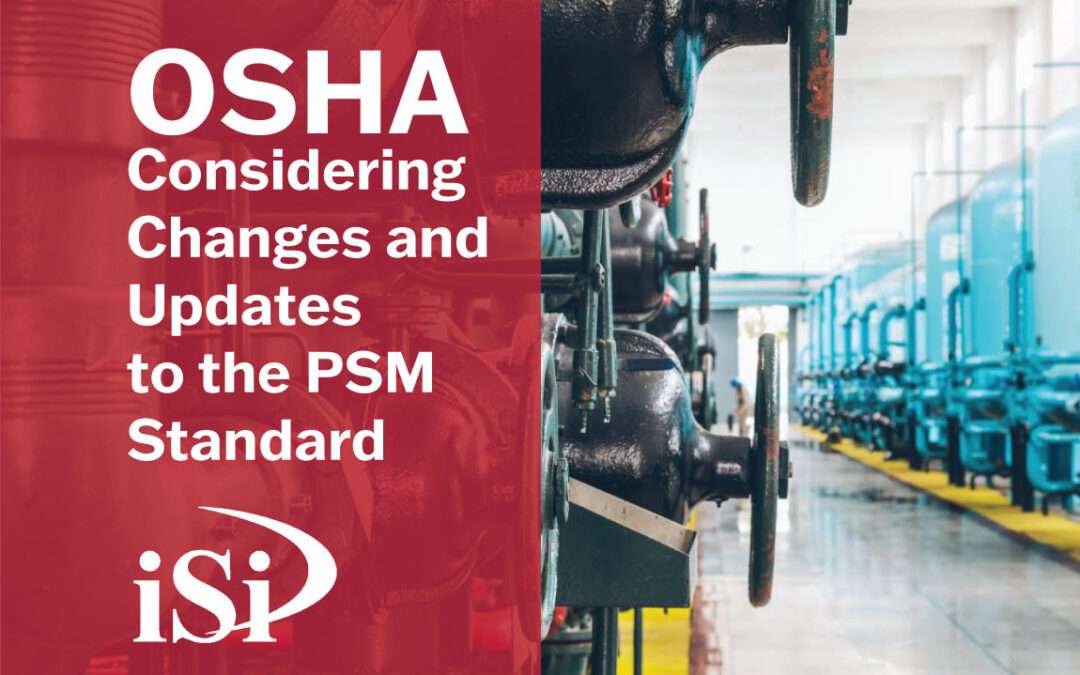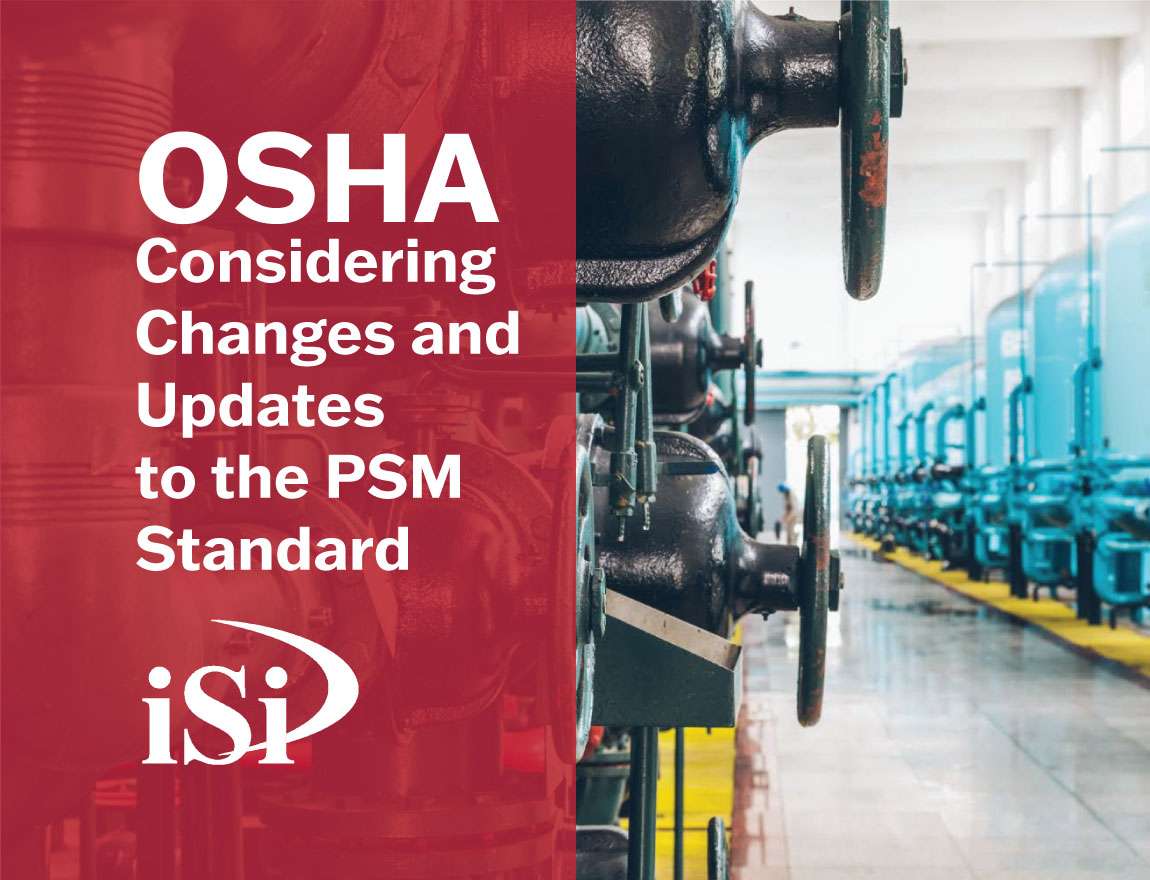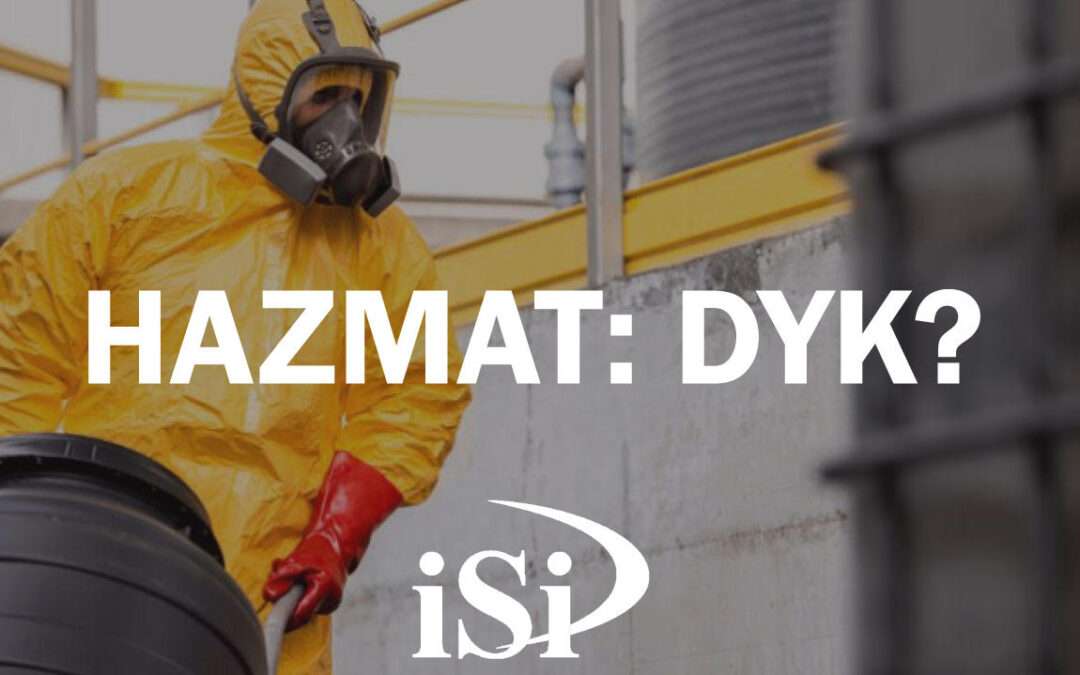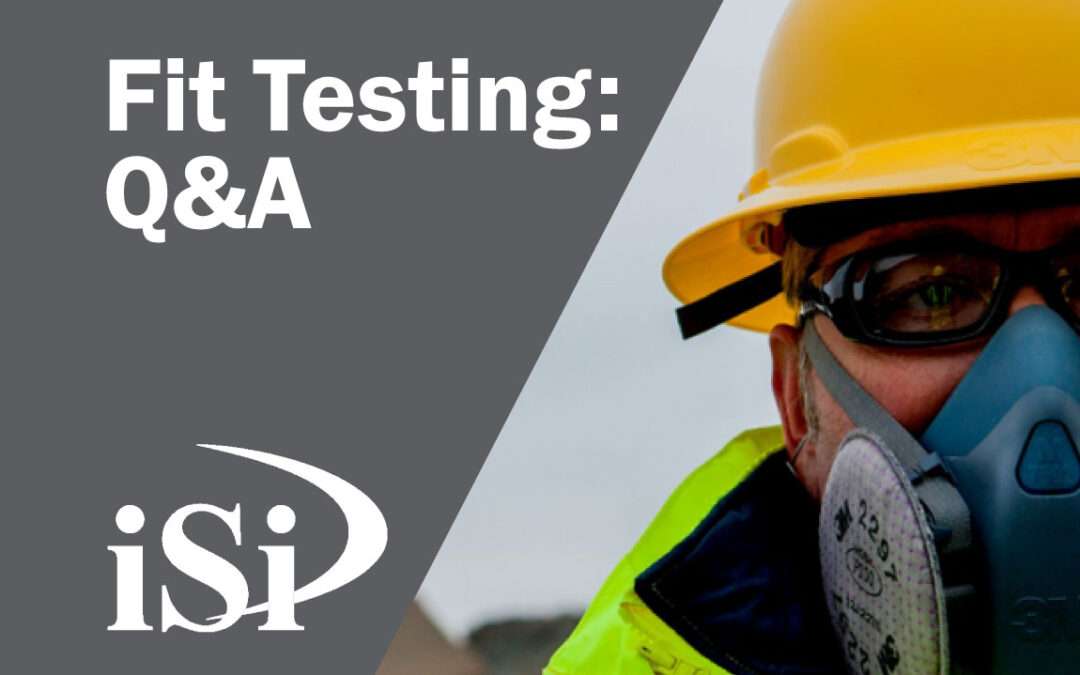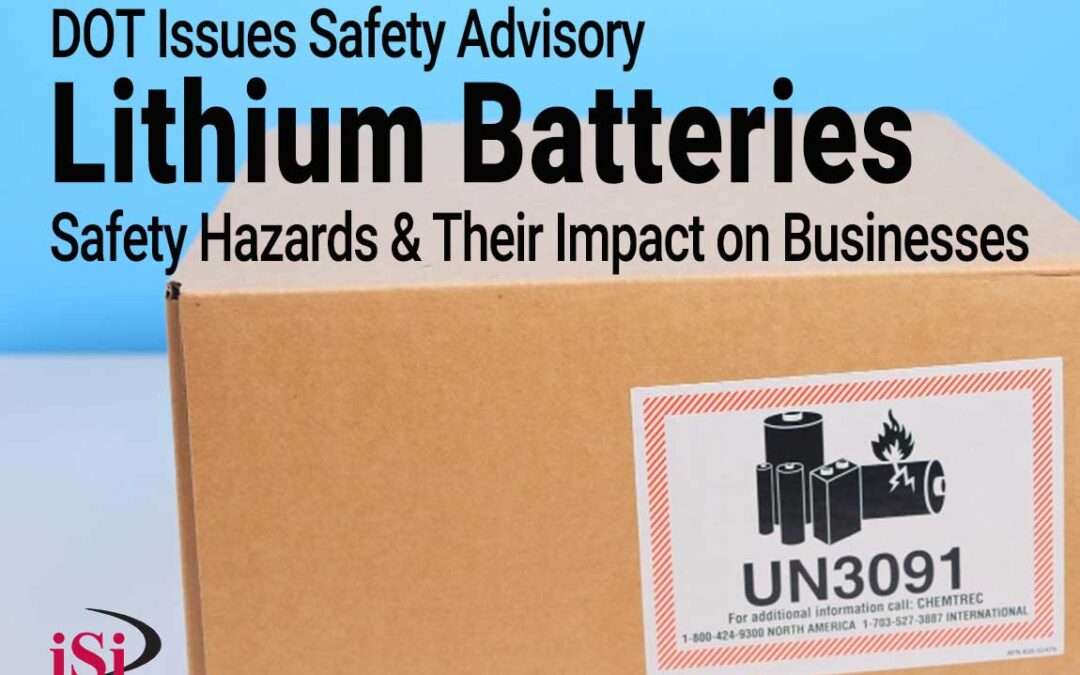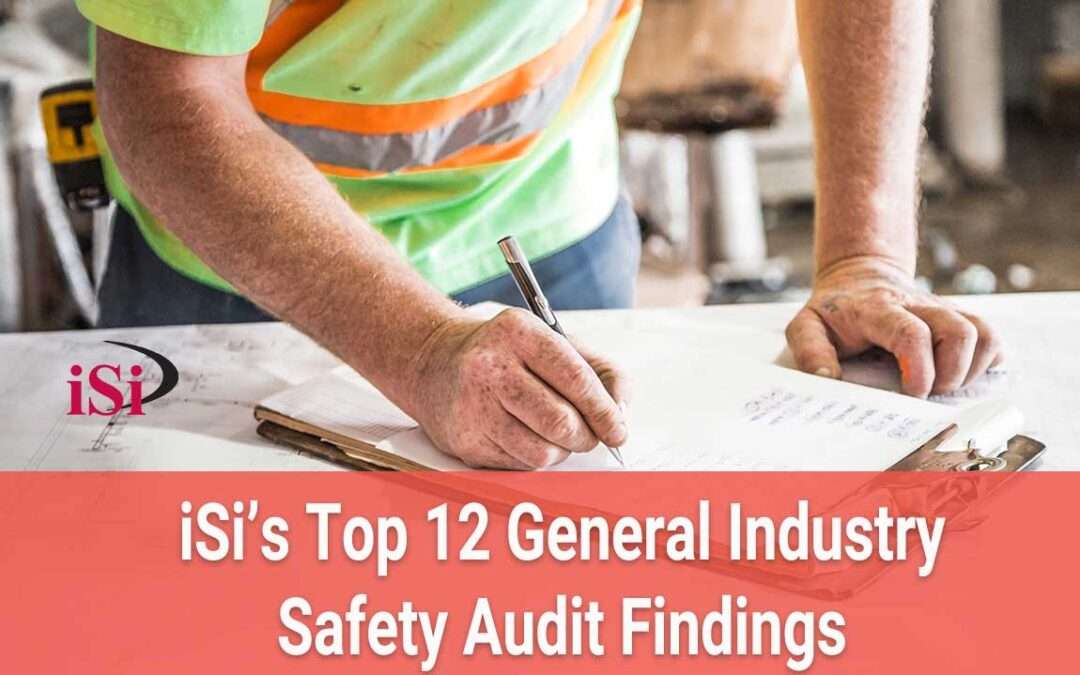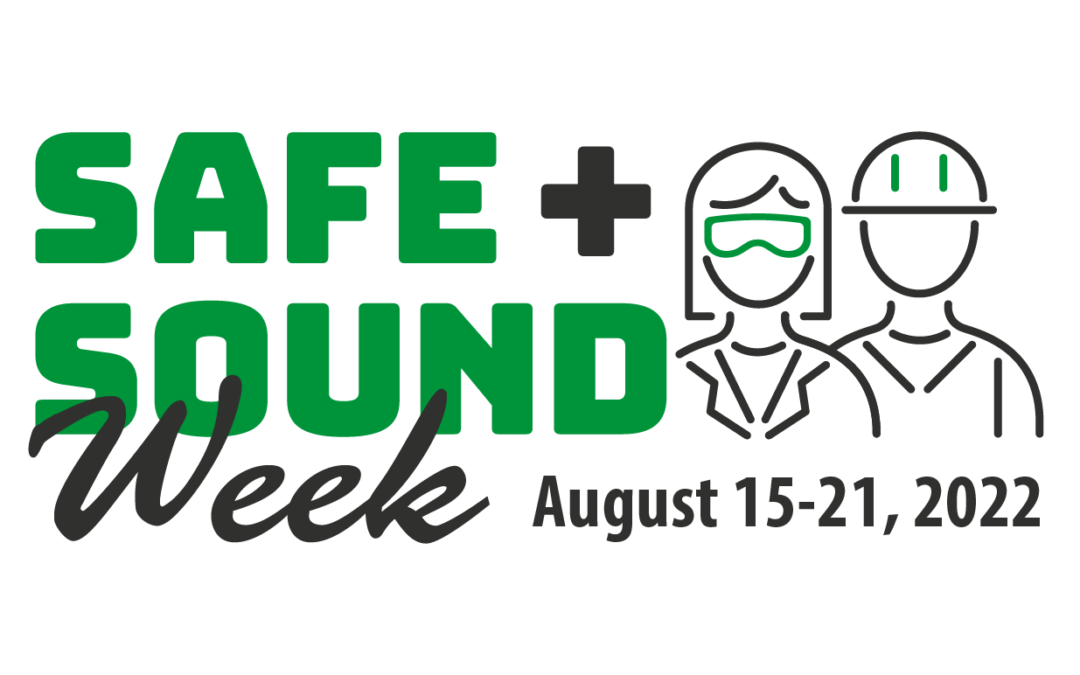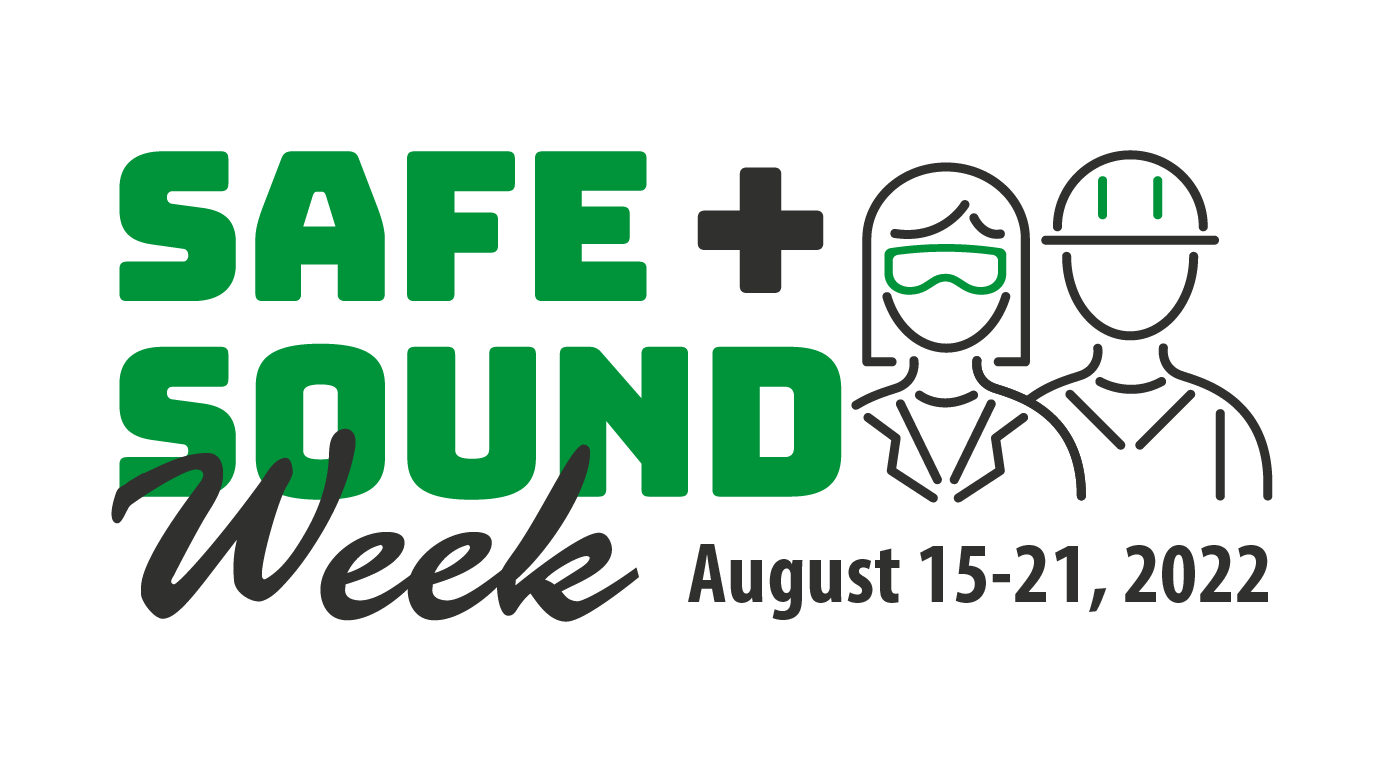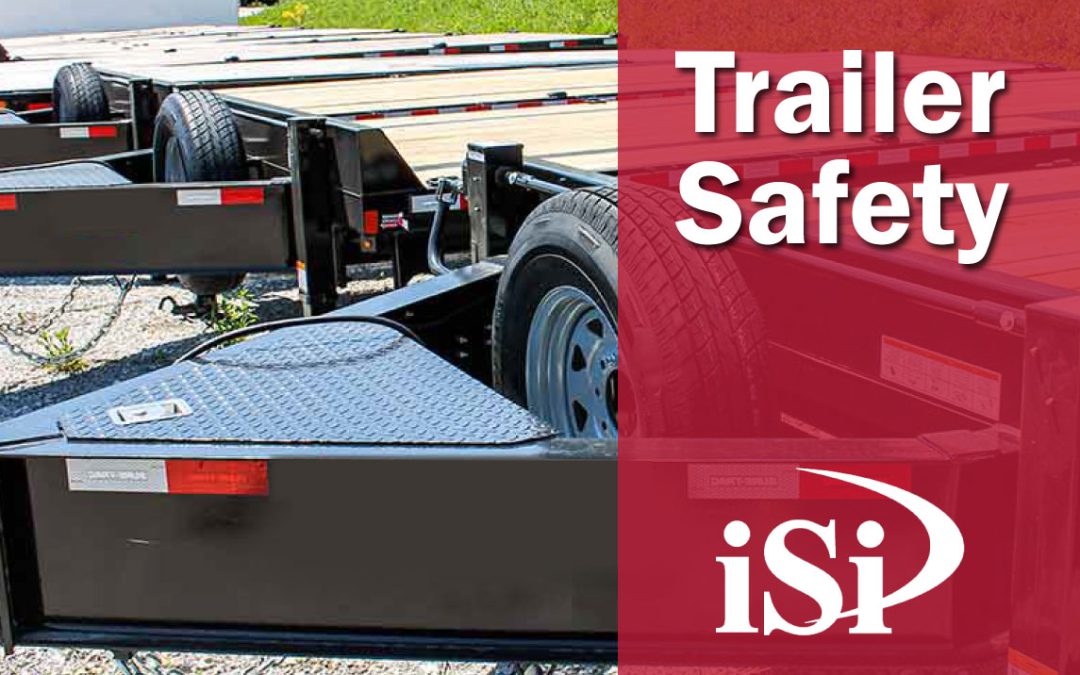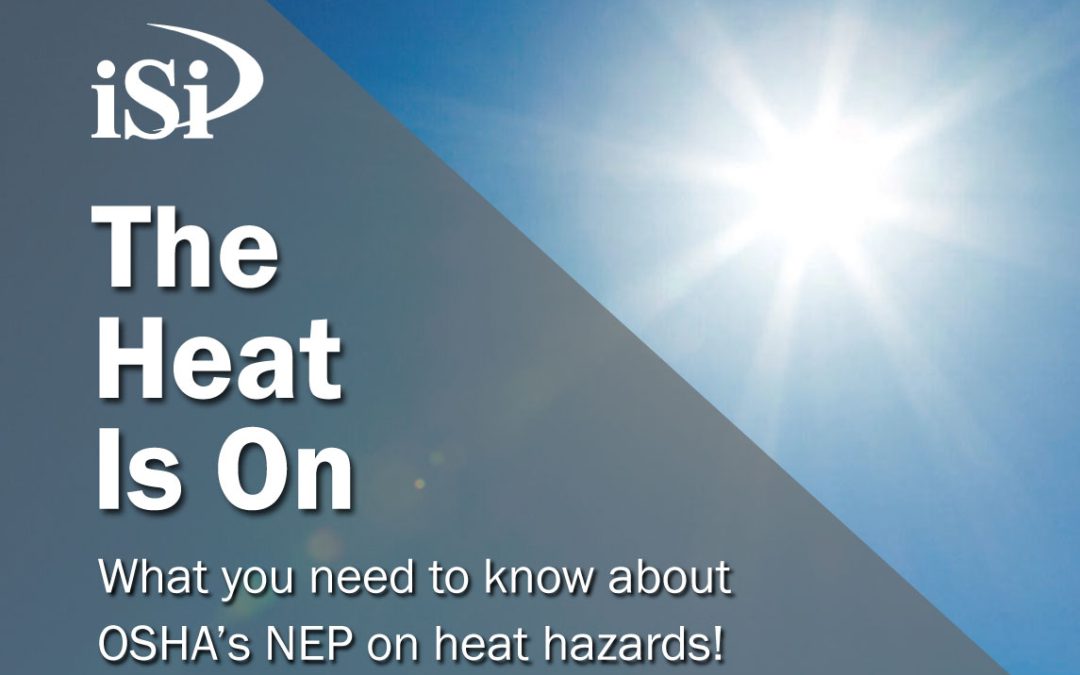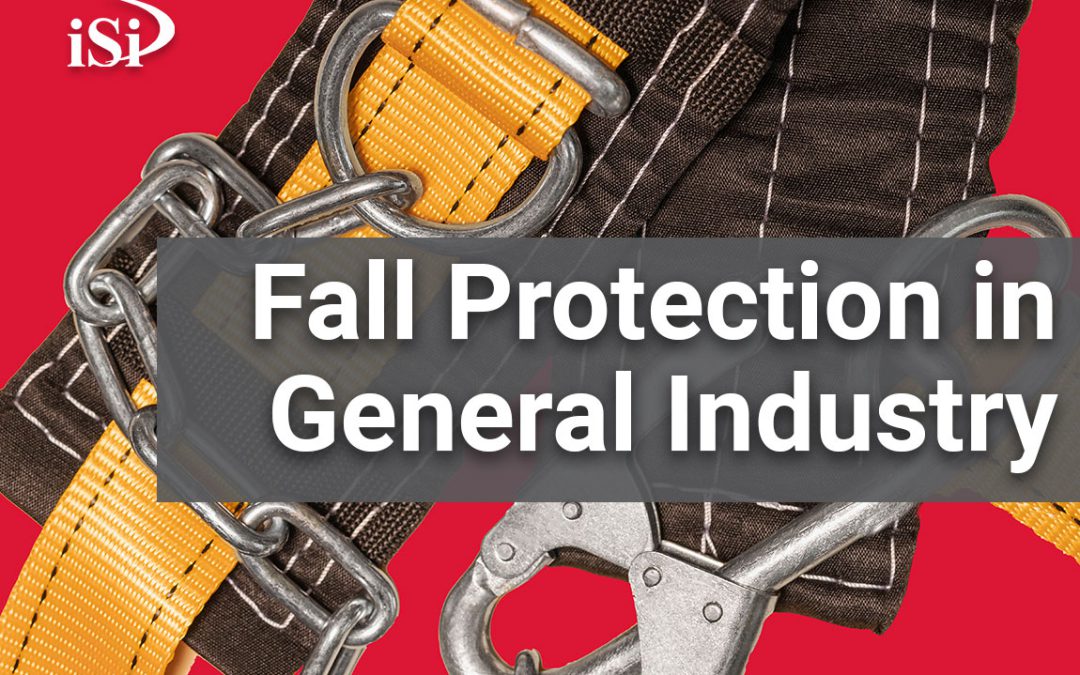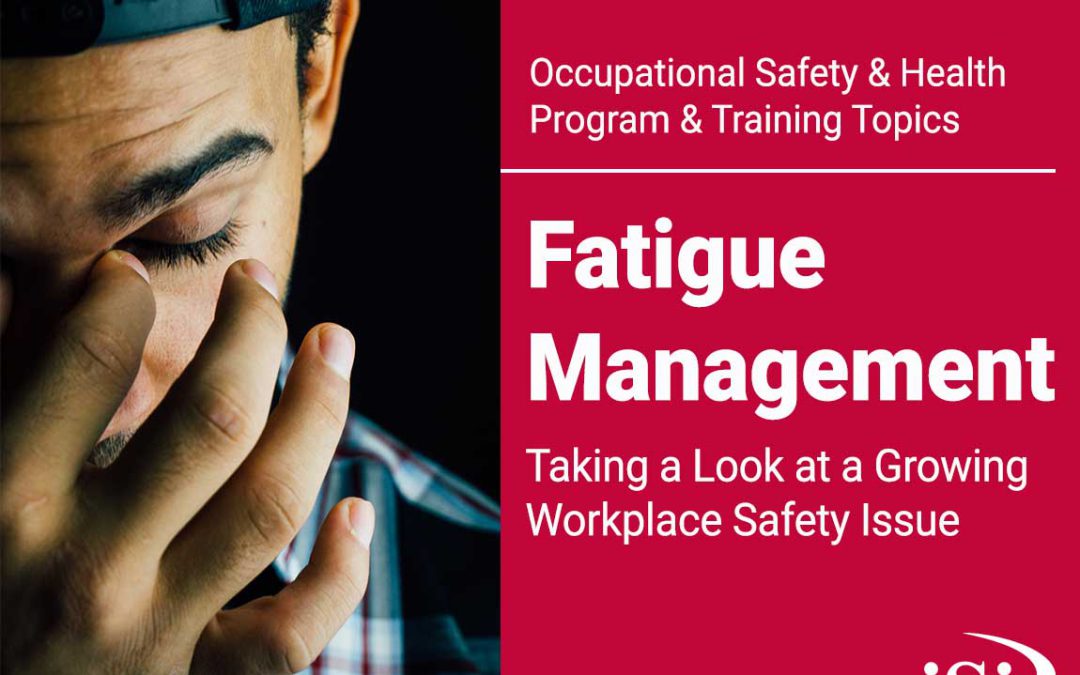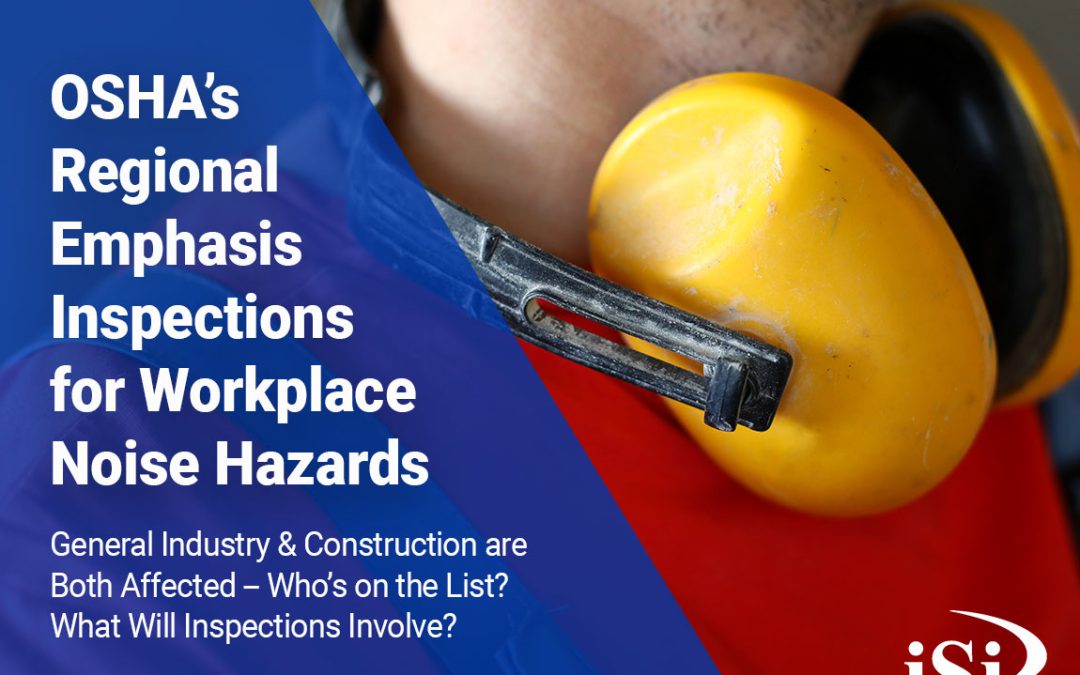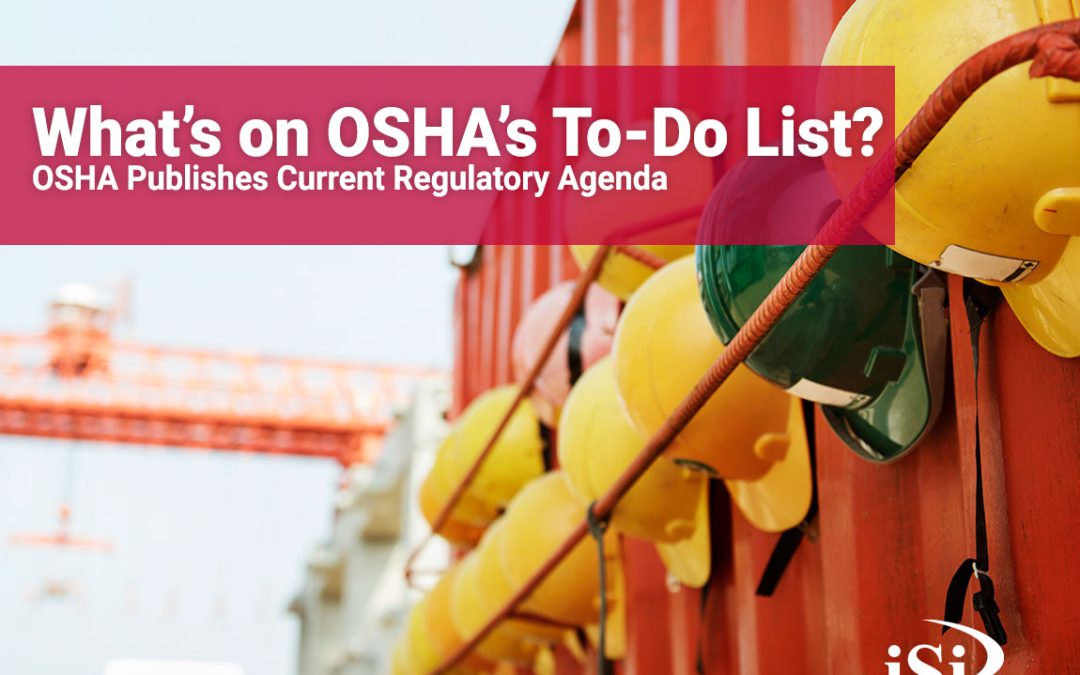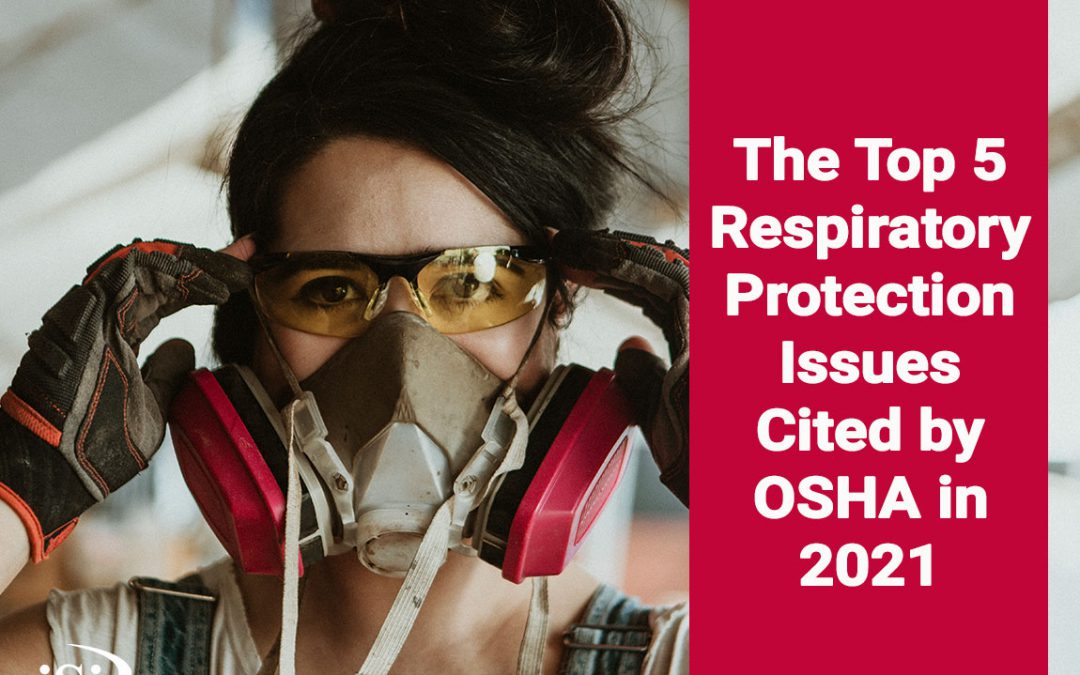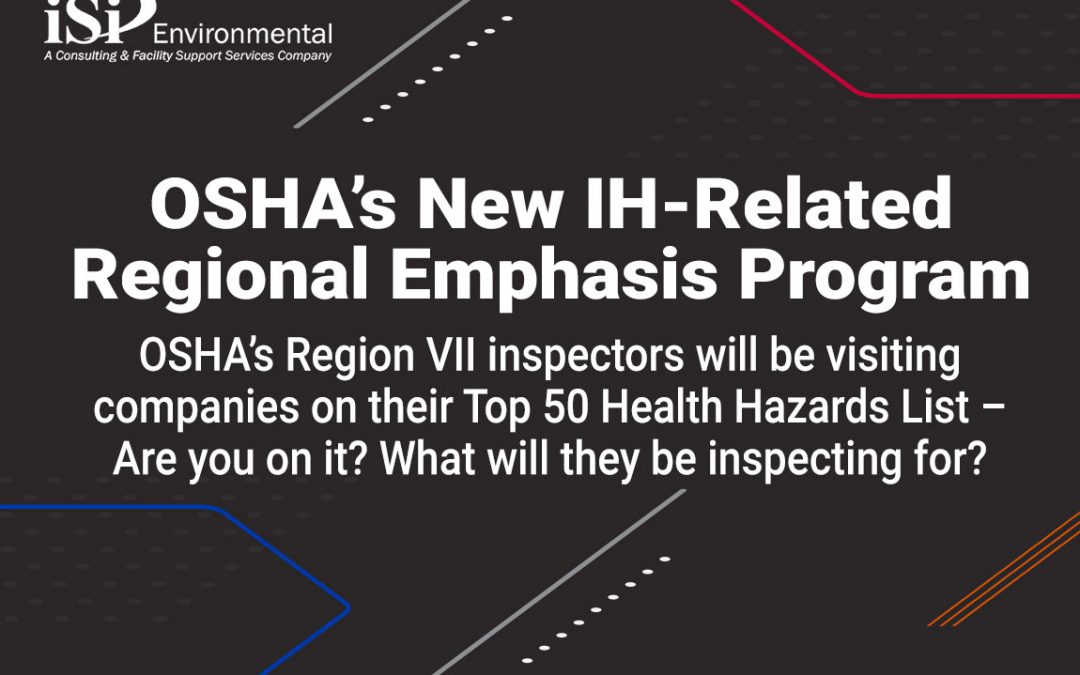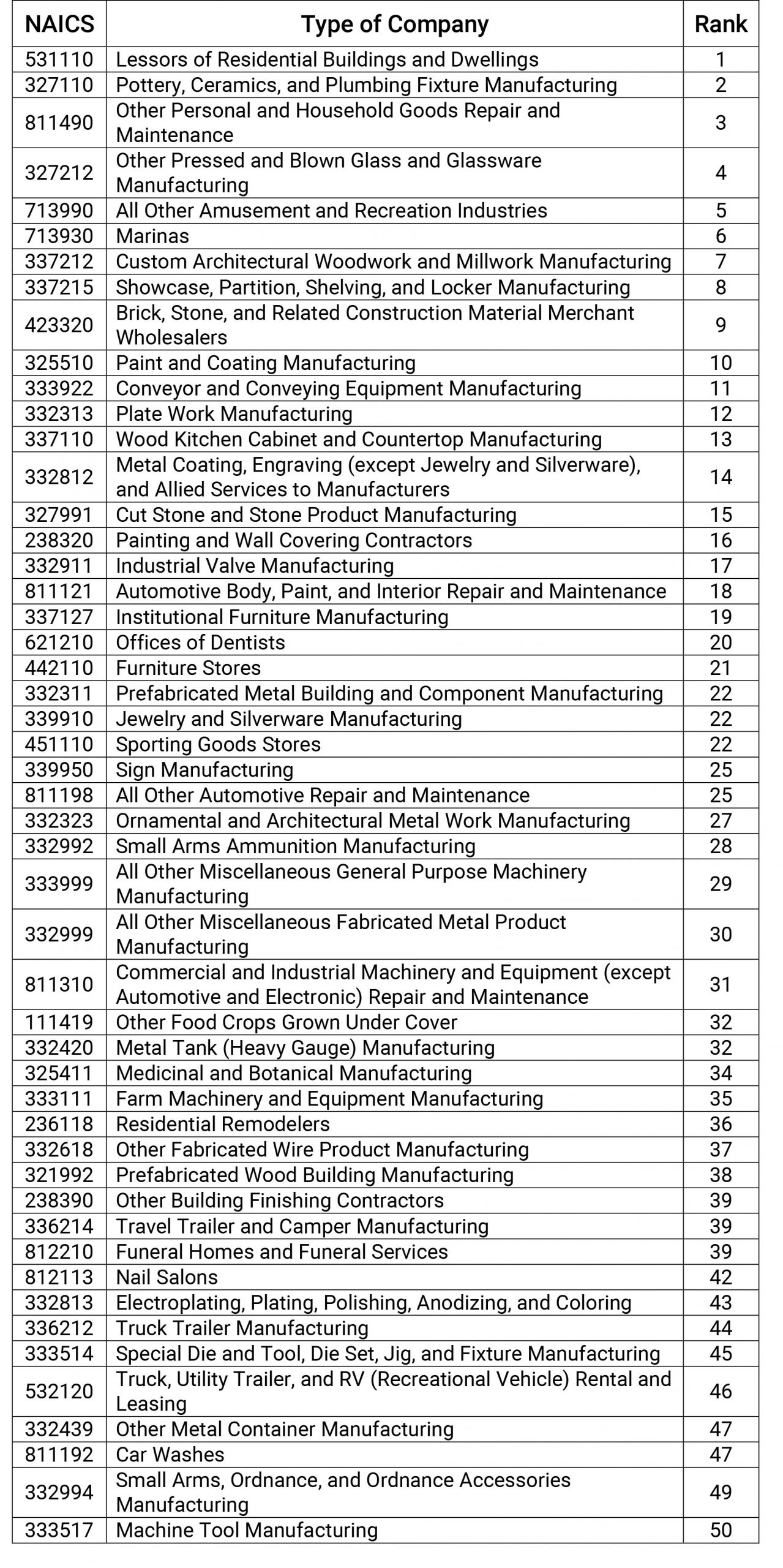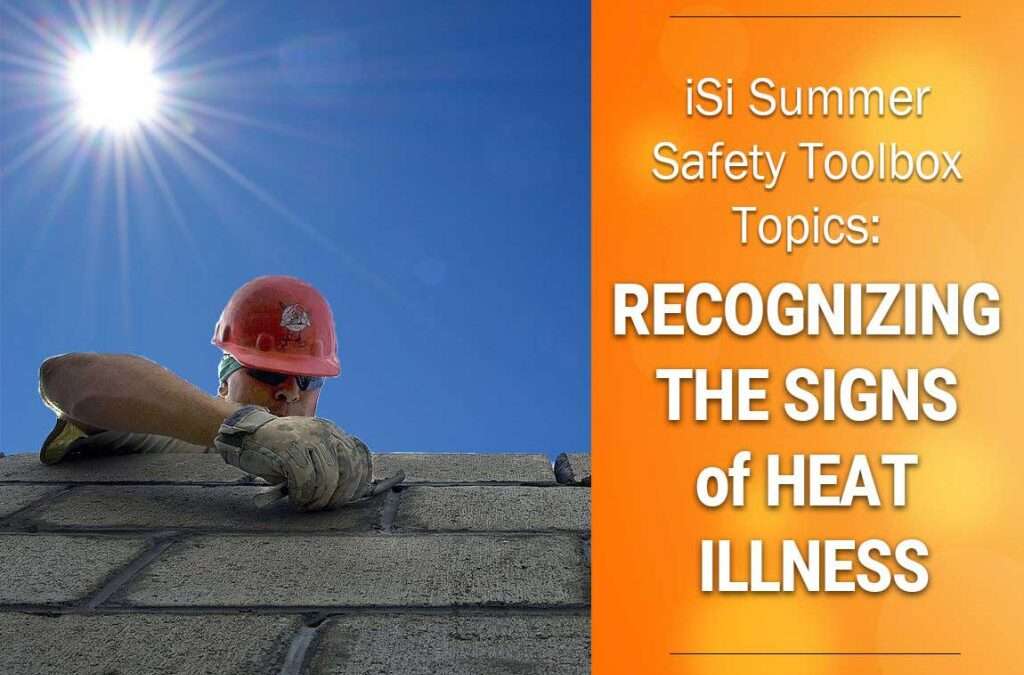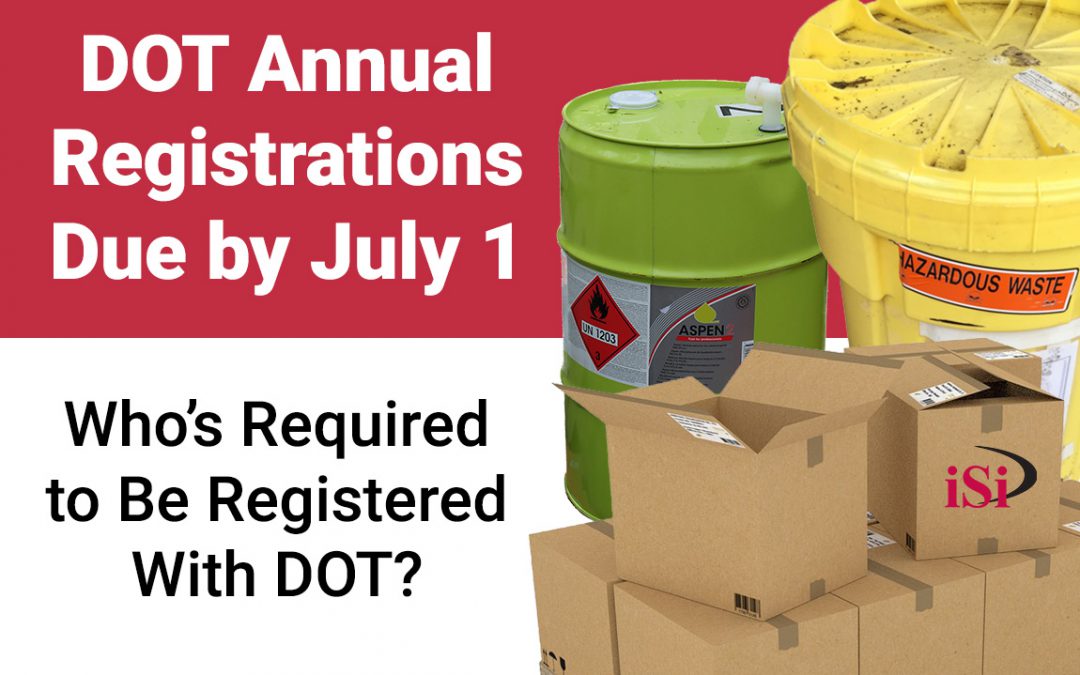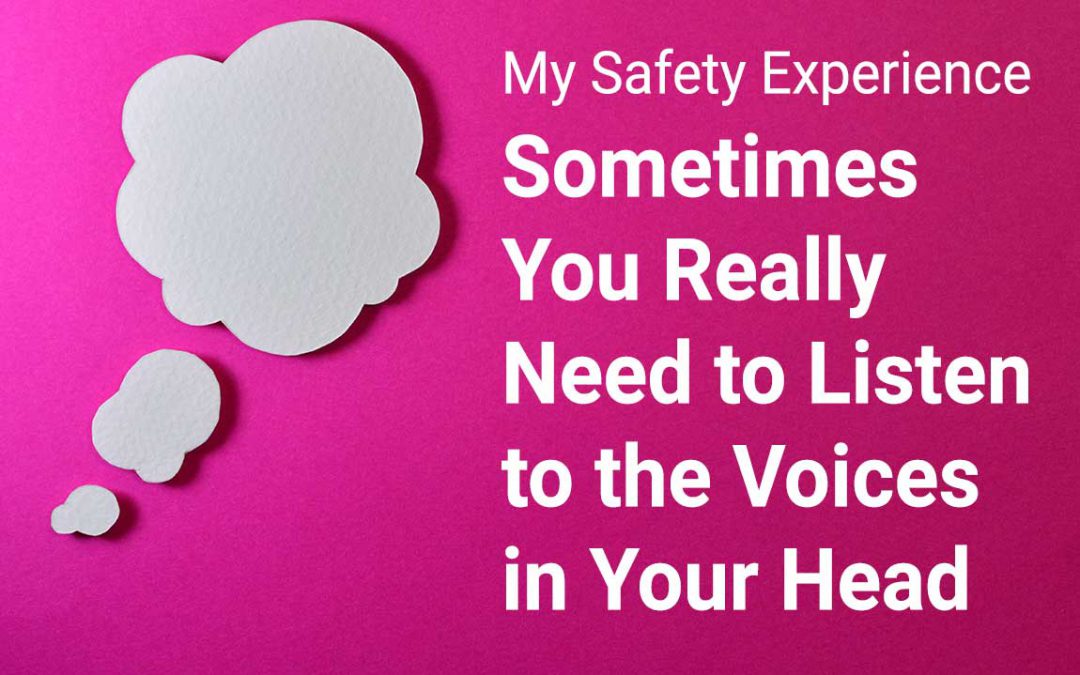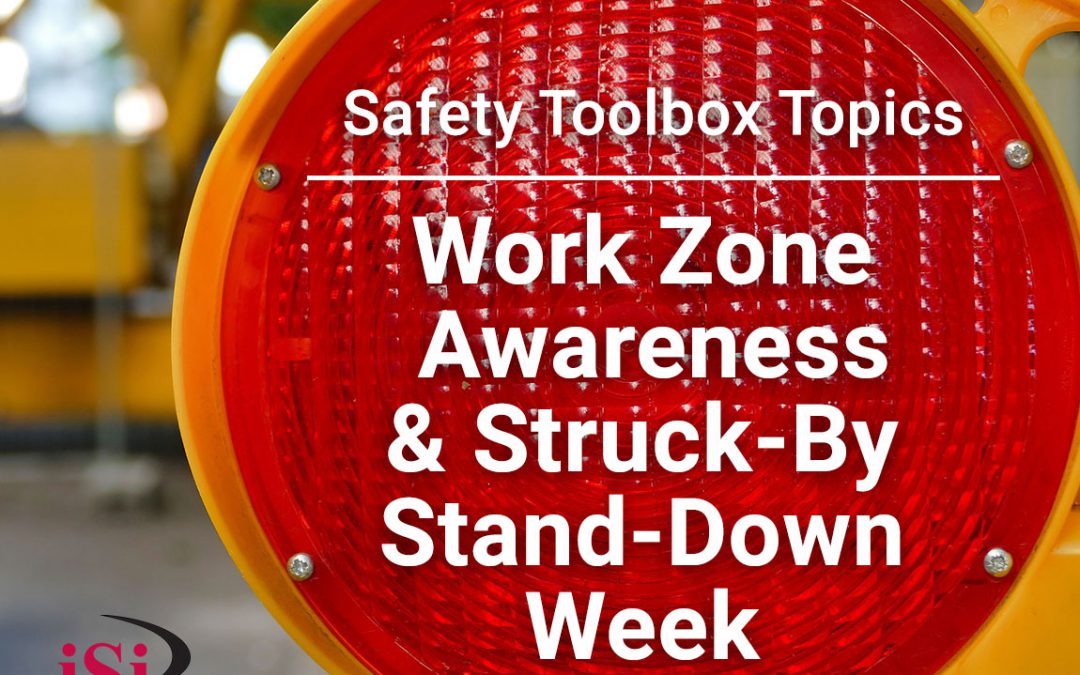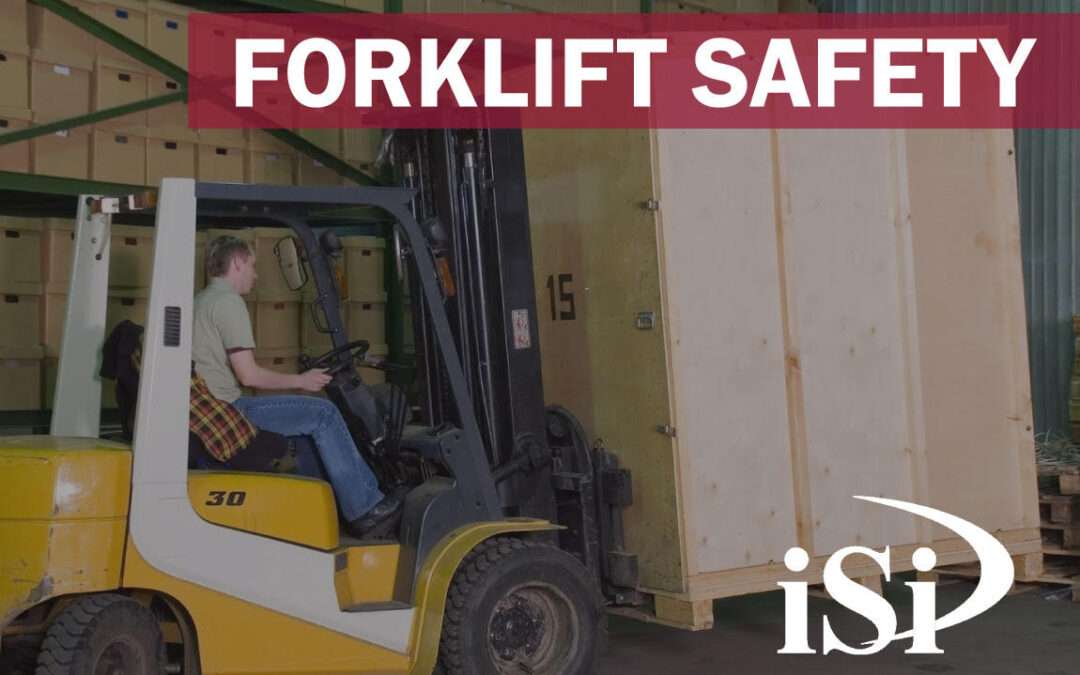
Forklift Top 6: Common OSHA Compliance Pitfalls for Powered Industrial Trucks
We have been seeing more and more issues regarding OSHA powered industrial trucks (forklift) compliance. OSHA currently has a number of powered industrial trucks local and regional inspection emphasis programs in several states. This means if you have an OSHA inspection, it’s likely they’ll look at your powered industrial trucks program while they are there, even if the inspection wasn’t initially for that.
The following are 6 areas where our safety consultants are finding compliance pitfalls. Below this list is a graphic which shows some examples of fines you may be facing if these issues are found at your facility.
Seat Belts
Although not explicitly stated in the standard, seat belts must be worn by workers operating a powered industrial truck. In a letter of interpretation, OSHA says that they would cite this issue under the OSH Act 5(a)(1). This act requires employers to protect employees from serious and recognized hazards.
ASME standards require powered industrial trucks manufactured after 1992 to have a restraint device such as a seat belt to protect the employee in case of tip over. If yours doesn’t have one, OSHA advises you contact the manufacturer to determine the best way to have one installed. If at any time the manufacturer contacted your company to let you know of a retrofit program for your powered industrial truck, you can be cited for not doing so.
Attachments
You cannot add any non-factory attachments to your truck without the manufacturer’s written approval. There are, however, some cases in which professional engineers can make these determinations with extensive safety study.
Once you do use attachments, all data plates, tags and decals need to be updated with revised capacity, operation and maintenance data. Anytime you do use attachments, when there is no load, the operator still needs to treat the forklift as partially loaded.
Legible Markings
It is very important that every control, nameplate and marking be visible and legible. If something has worn off or fallen off, you need to find a way to re-label that item so it can be read and identified. For example, a client received a fine of $4,700 for a forklift lever which wasn’t marked.
Make sure your aisleways and walkways are clearly marked so pedestrians know where to expect trucks will be operating, and ensure you have adequate lighting.
Training
Training must be provided before anyone is to use the truck. Initial training must include both instructional training (classroom, video, etc.), practical training (hands-on demonstration), and an evaluation of how the employee is performing in the workplace. Refresher training, that is, a reevaluation of the operator’s performance must be conducted every 3 years.
In addition to the triennial requirements, refresher training shall be provided to the operator when the operator has been observed to operate the vehicle in an unsafe manner; the operator has been involved in an accident or near-miss incident; the operator has received an evaluation that reveals he/she is not operating the truck safely; or a condition in the workplace changes in a manner that could affect safe operation of the truck. It is important to note that the standard does not take into account whether or not the operator was at fault in accident or near-miss incident. Refresher training is also required when the operator is assigned to drive a different type of truck. An example of this would be a sit-down forklift vs. a stand-up forklift vs. an all-terrain forklift.
Usage
Make sure you know the contents of the atmospheres in which your forklifts will be operating. You are required by OSHA to know what your occupational exposures are anyway, however, only certain types of forklifts can be safely used in areas contaminated by certain chemicals and materials. The standard goes into great detail on which types of forklifts can be used in certain areas.
A forklift is considered unattended when the driver is 25 ft. away or more or it is out of their view. Thus, when the truck is unattended, the load should be fully lowered, controls neutralized, power off, and brakes set. If the driver is within 25 ft. and the forklift is still visible, they must follow all of these procedures except for turning off the forklift.
Inspections and Repairs
Inspections must be conducted daily and when the forklift is used around the clock, inspections must be conducted after each shift. If it’s found that there are any defects, issues with overheating, unsafe conditions or other repairs needed, the forklift must be taken out of service until those can be corrected.
Need Help?
Need assistance with your OSHA compliance tasks? How can we make compliance easier for you?
We have been seeing more and more issues regarding OSHA powered industrial trucks (forklift) compliance. OSHA currently has powered industrial trucks local and regional emphasis programs in a number of states. This means if you have an OSHA inspection, it’s likely they’ll look at your powered industrial trucks program while they are there, even if the inspection wasn’t initially for that.
The following are 6 areas where compliance pitfalls are seen. Below this list is a graphic which shows some examples of fines you may be facing if these issues are found at your facility.
Seat Belts
Although not explicitly stated in the standard, seat belts must be worn by workers operating a powered industrial truck. In a letter of interpretation, OSHA says that they would cite this issue under the OSH Act 5(a)(1). This act requires employers to protect employees from serious and recognized hazards.
ASME standards require powered industrial trucks manufactured after 1992 to have a restraint device such as a seat belt to protect the employee in case of tip over. If yours doesn’t have one, OSHA advises you contact the manufacturer to determine the best way to have one installed. If at any time the manufacturer contacted your company to let you know of a retrofit program for your powered industrial truck, you can be cited for not doing so.
Attachments
You cannot add any non-factory attachments to your truck without the manufacturer’s written approval. There are, however, some cases in which professional engineers can make these determinations with extensive safety study.
Once you do use attachments, all data plates, tags and decals need to be updated with revised capacity, operation and maintenance data. Anytime you do use attachments, when there is no load, the operator still needs to treat the forklift as partially loaded.
Legible Markings
It is very important that every control, nameplate and marking be visible and legible. If something has worn off or fallen off, you need to find a way to re-label that item so it can be read and identified. For example, a client received a fine of $4,700 for a forklift lever which wasn’t marked.
Make sure your aisleways and walkways are clearly marked so pedestrians know where to expect trucks will be operating, and ensure you have adequate lighting.
Training
Training must be provided before anyone is to use the truck. Initial training must include both instructional training (classroom, video, etc.), practical training (hands-on demonstration), and an evaluation of how the employee is performing in the workplace. Refresher training, that is, a reevaluation of the operator’s performance must be conducted every 3 years.
In addition to the triennial requirements, refresher training shall be provided to the operator when the operator has been observed to operate the vehicle in an unsafe manner; the operator has been involved in an accident or near-miss incident; the operator has received an evaluation that reveals he/she is not operating the truck safely; or a condition in the workplace changes in a manner that could affect safe operation of the truck. It is important to note that the standard does not take into account whether or not the operator was at fault in accident or near-miss incident.
Refresher training is also required when the operator is assigned to drive a different type of truck. An example of this would be a sit-down forklift vs. a stand-up forklift vs. an all-terrain forklift.
Usage
Make sure you know the contents of the atmospheres in which your forklifts will be operating. You are required by OSHA to know what your occupational exposures are anyway, however, only certain types of forklifts can be safely used in areas contaminated by certain chemicals and materials. The standard goes into great detail on which types of forklifts can be used in certain areas.
A forklift is considered unattended when the driver is 25 ft. away or more or it is out of their view. Thus, when the truck is unattended, the load should be fully lowered, controls neutralized, power off, and brakes set. If the driver is within 25 ft. and the forklift is still visible, they must follow all of these procedures except for turning off the forklift.
Inspections and Repairs
Inspections must be conducted daily and when the forklift is used around the clock, inspections must be conducted after each shift. If it’s found that there are any defects, issues with overheating, unsafe conditions or other repairs needed, the forklift must be taken out of service until those can be corrected.
By the Numbers
The following are examples of forklift-related fines levied to companies across the U.S. Please keep in mind that they are subjective, depending on severity and situation. For many of these, the costs listed were the final negotiated fine. In most cases, the fine was originally double the amount shown, then negotiated down.
Need Help?
Need assistance with your OSHA compliance tasks? How can we make compliance easier for you?
